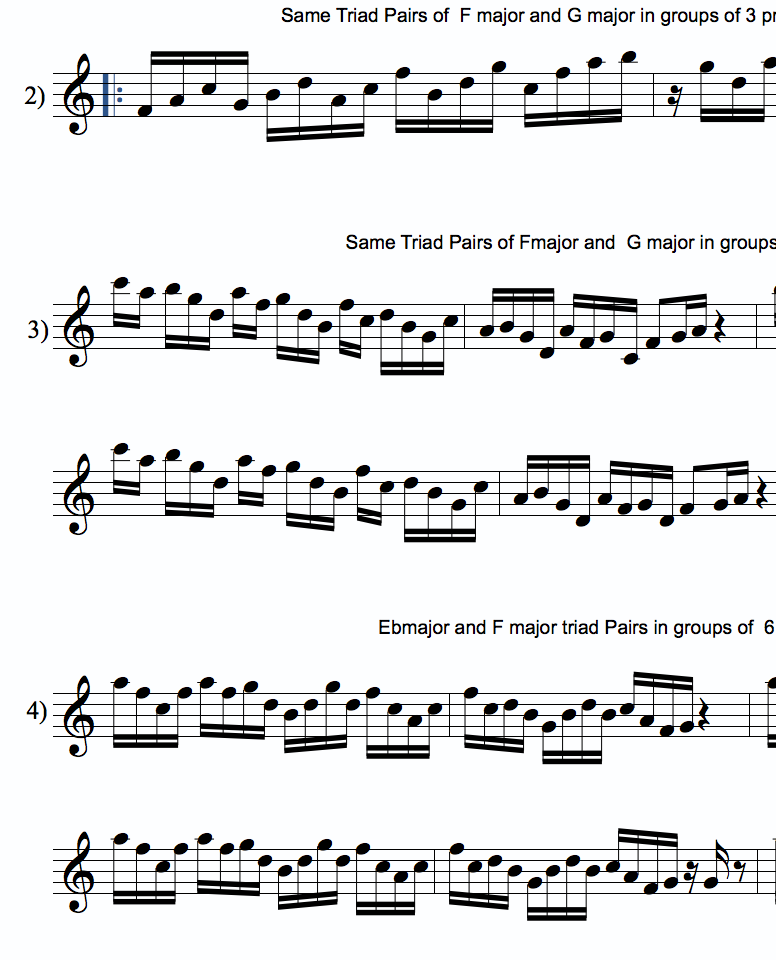

Theory & Analysis The Theory & Analysis page is the spot for general music theory questions, and more in-depth analysis of pieces.A trumpet player interested in jazz, a vocalist interested in early music, a pianist interested in classical composition. Music is a very large subject, and the advanced theory that students will want to pursue after mastering the basics will vary greatly. Although it is significantly expanded from "Introduction to Music Theory", this book still covers only the bare essentials of music theory.All the chords are built by harmonic superimposition of notes by third intervals above each scale’s degree. It means: every song is based on a scale or key and it uses major or minor scale’s notes. The key concept is the most important base of musical harmony. Music harmony and theory is a fundamental basis to create and improvise music.Identify and label the starting key and the ending key, and clearly mark the pivot chord(s). Provide a complete Roman numeral analysis, with clear indications of chord qualities and inversions.


Music Theory Sample Written Theory Placement Exam, 7 of 7 HARMONIC ANALYSIS 3 The following passage contains an enharmonic modulation.The Z-Relation in Theory and Practice: Dave Headlam: Gross: Austin: 2011: Bill Evans and the Craft of Improvisation: Robert Wason/Matthew Brown: Hanninen: Dora: 1996: A General Theory for Context-Sensitive Music Analysis: Applications to Four Works for Piano by Contemporary American Composers: Robert Morris: Heath: Mary Jo: 1988.What does the Basic Rudiments Music Theory course cover? Covers the foundations of music notation and vocabulary Function in key signatures up to and including 4 sharps and 4. Practice examinations will be graded and returned. Three practice examinations are given at the end of the course to prepare students for the RCM (or CHRCAP) examination. It sounds like a very technical idea, but basic harmonic analysis just means understanding how a chord is related to the key and to the other chords in a piece of music. Basic triads in major keys, modulation and naming chords. Harmonic analysis in music theory for naming chords.Try starting with Beginning Harmonic Analysis. You do not have to learn to read music to be able to do this, but it is very helpful to know a little bit about music theory so that you can predict which chords are most likely to happen in a song.7c Overview - Performing a Harmonic Analysis 7c Examples - Performing a Harmonic Analysis 7c Lesson - Performing a Harmonic Analysis Realizing a figured bass in strict basso continuo style Introduction to musical functions Performing a harmonic analysis Harmonic functions Harmonic syntax - the idealized phrase Harmonic syntax - prolongation.Weitzmann responded to a competition for the best explanation of the compositional techniques of the so-called New German School, of which Liszt and. However, in his day, he was also lauded for his ability to explain practice. Yet clearly his impact on music was profound and unprecedented: the old adage is that theory lags behind practice.The music theoretic analysis of music into abstract chord functions suggests the possibility that listeners have an internal representation of these chord functions which may be activated not only by direct sounding of. The analysis of tonal melodies in music theory thus invariably makes reference to the underlying-or implied-harmonic structure.Music history and the physics of sound are included to the extent that they shed light on music theory. The main purpose of the course, however, is to explore basic music theory so thoroughly that the interested student will then be able to easily pick up whatever further theory is wanted.Rent textbook Music in Theory and Practice Volume 1 by Benward, Bruce - 9780078025150.My doctoral thesis involved the creation, curation, and analysis of a corpus of popular rap transcriptions: the Musical Corpus of Flow-research later published in Empirical Musicology Review. I completed my PhD in Music Theory at Ohio State University, where I studied with David Huron.


 0 kommentar(er)
0 kommentar(er)
